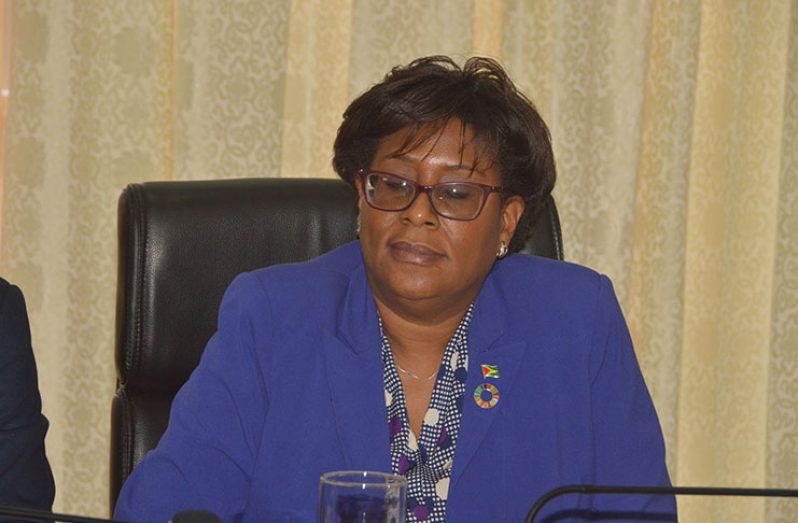…as gov’t rolls out pilot project
OVER 11,000 residents from 20 communities in Regions Seven, Eight, Nine and 10 will be the first to benefit from the Ministry of Public Telecommunications’ Information and Communications Technology (ICT) access and e-services for Hinterland, Poor and Remote Communities (HPRCs) pilot Project.
The project is aimed at providing HPRCs with access to government services, the worldwide web and social media, many for the first time.
Along with the United Nations Development Programme (UNDP) and the National Data Management Authority (NDMA), the ministry will work to have the first 20 villages provided with these services in 2019.
The villages to benefit in Region Seven (Cuyuni-Mazaruni) include Kaikan, Jawalla, Phillipai, Pariuma, Kako, Isseneru, Kangaruma and Tasserene, which altogether; have a population of over 5,000.
In Region Eight (Potaro-Siparuni), over 1,600 residents in the communities of Kurukubaru and Monkey Mountain, and almost 4,000 in Apoteri, Rewa, Surama, Aranaputa, Toka, Shulinab, Maruranau and Karaudanau in Region Nine (Upper Takutu-Upper Essequibo), are expected to benefit.
The villages in Region 10 (Upper Demerara-Upper Berbice) include Kimbia and Wiruni at a population of over 700.
At a press conference at the Arthur Chung Conference Center (ACCC) on Monday, the stakeholders involved provided an update on the project.
Minister of Public Telecommunications, Cathy Hughes, said that the five-year project has been in the making for over four years, with the project document being signed on May 30, 2017.
Funding for project comes under a US$17M Guyana REDD+ Investment Fund (GRIF) and upon completion, should see 200 ICT hubs being deployed.
It focuses primarily on providing e-government services in health; education; public security and citizenship. For example, online application forms will soon be able to be filled and completed out by residents in remote regions, saving them the time and money to travel to the capital. Some of these applications include drivers’ licence; and the submission of birth certificates within the application for a child to attend school.
Meanwhile, NDMA Chairman Floyd Levi said that classes conducted in Georgetown can be recorded or even livestreamed to students and residents in HPRCs.
Telemedicine will also become a possibility, which is the remote diagnosis and treatment of patients though ICT. “We see a community that is connected and that connection permits the health workers in that community to be able to communicate with the health professional – a doctor perhaps – who is based outside of that community,” he said.
The team is in the process of procuring bandwidth provision and intends to provide 4Mb per second for hinterland communities and a bit more for coastal communities because of the presence of the network.
Minister Hughes reminded the media of the project’s solar component, which means that the ICT hubs will still benefit HPRC areas where there are electricity challenges.

“What we realised when we formed the Ministry of Telecommunications is that the gap; the divide between facilities and access to ICT; access to the internet which can spur development; which can spur telemedicine; online learning, education, entrepreneurial activities, all of that, the hinterland region traditionally has been deprived of,” she said.
“That’s why we formulated this project. That’s why we feel that this project is so important.”
Thus far US $608,000 has been expended on the project with a basic assessment and needs assessment also completed. The two assessments, conducted countrywide, have assisted with the preparation of the project document and with informing residents of the project.
“This information helped us to fashion this project. We know what their needs are; we know what their challenges are and we are working to meet those challenges and to help them to meet their needs,” Project Manager Phillip Walcott, said.
Just before the press conference, the minister along with the other stakeholders hosted the second meeting of the board where representatives of the villages were further updated.
Walcott added that the project has taken up a community participation component, which will see the active involvement of community members through the setting up of management and monitoring committees.
He said that these committees will ensure fairness, equity and that no bias is present in the provision of services to residents. “Each ICT hub that is placed within the community will be managed by the community. The community will elect their representatives that will manage that community [ICT hub]. They will run the facility and we will provide technical assistance to ensure that the community is able to provide the services as required,” he explained.
Ultimately, however, the government will sustain the cost of ensuring the sustainability of the project.
Already the government has facilitated the establishment of 172 hubs country-wide and has plans for scores more in the future.



.jpg)










